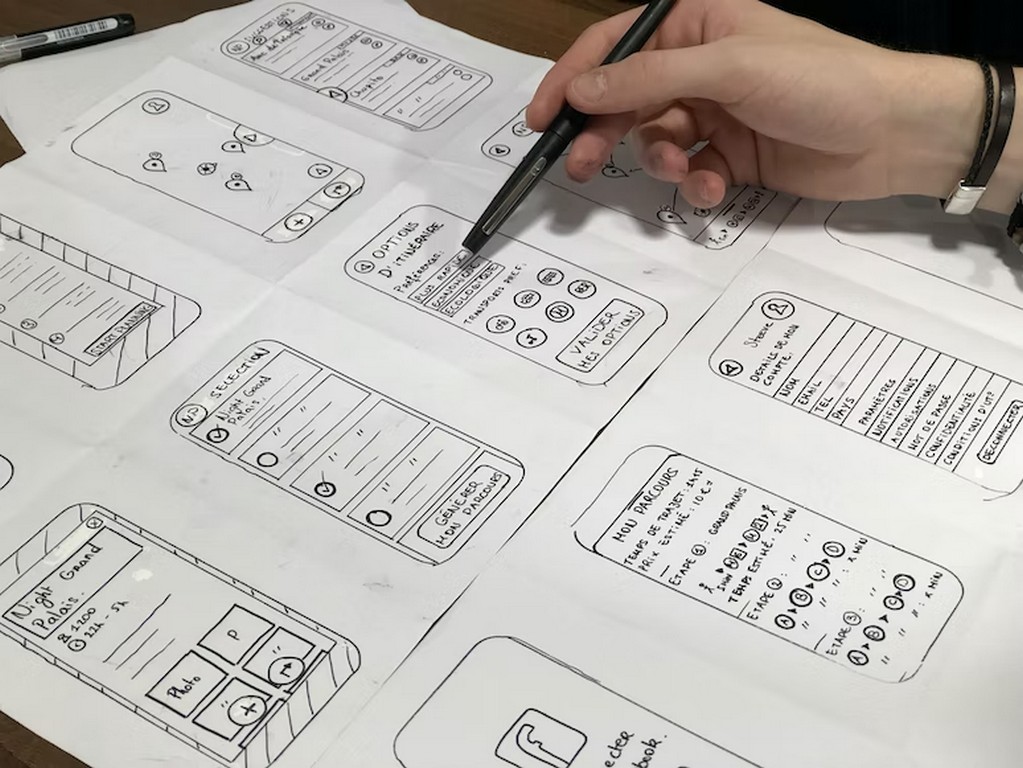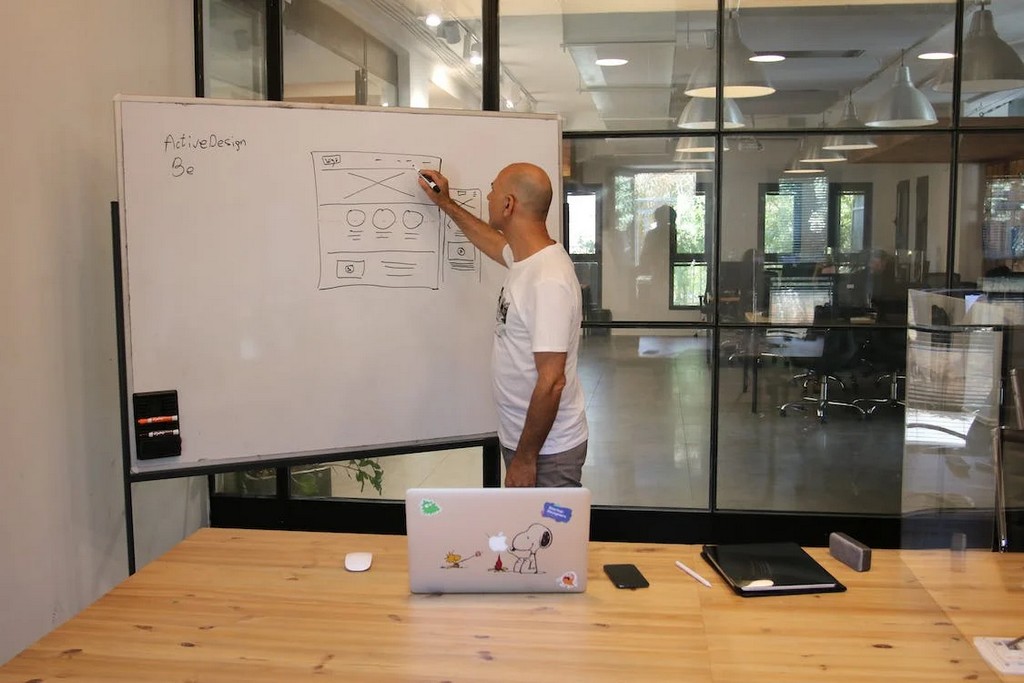How to Master Visual Hierarchy in UI Design?
28/12/2023 2023-12-28 10:55How to Master Visual Hierarchy in UI Design?
Visual hierarchy is an essential aspect of UI design that determines how elements in a design are arranged and displayed to communicate their importance to the user. Colour, contrast, size, and typography are just some of the tools used to establish hierarchy and draw the eye of the user to what’s most essential on the screen. This article will discuss the significance of visual hierarchy in UI design, the hierarchy of design principles, different kinds of user interface design, visual hierarchy examples, and various aspects of UI design.
Importance of Visual Hierarchy in UI Design
User interface design relies heavily on the visual hierarchy to ensure that users can rapidly grasp the interface’s content and layout. It reduces the learning curve and the likelihood of users getting disoriented in the interface.
In UI design, visual order draws attention to key components like buttons, links, and CTAs. Because of this, visitors will likely complete the desired task.
Hierarchy in Design Principles

The concept of “hierarchy” in design principles relates to the way components of a design are arranged to convey a sense of hierarchy. Creating a visual hierarchy with the help of design elements like colour, size, contrast, and typography draws the eye of the user to the essential parts of the screen.
The design hierarchy is based on several tenets, the most important of which are:
- Differences in size, colour, and shape can be used to draw the eye and direct the user’s focus to the most essential parts of the screen.
- The use of varying sizes to convey a feeling of hierarchy is an example of the principle of scale.
- Using proximity establishes a visual relationship between two elements, as in a diagram.
- Repetition is a design technique that uses the same or similar colour, shape, or typography multiple times to establish cohesion and harmony.
Types of UI Design

There are several types of UI design, including:
- Flat design uses basic, two-dimensional, minimalistic elements to achieve a clean, modern appearance.
- Material Design uses depth, lighting, and shadows in a design to produce a feeling of hierarchy and order.
- Skeuomorphic Design uses design elements that mimic real-world objects to create a sense of familiarity and realism in the design.
Hierarchy Tree UI Design
A hierarchy tree UI design is a graphical representation of the relationships between design components. It is frequently used to create a sense of order and organisation in complicated interfaces such as navigation menus and sitemaps.
Elements in a hierarchy tree UI design are organised in a tree-like structure, with the most important aspects at the top and the least essential elements at the bottom. This makes it simple for users to grasp the relationship between various elements and navigate the interface quickly and efficiently.
Visual Designer vs UI Designer

Visual and UI designers’ responsibilities in the design process are distinct. Visual designers are responsible for the overall appearance and feel of the interface, whereas UI designers are responsible for the functionality and usability of the interface.
Visual designers are responsible for creating the interface’s visual components, such as colour, typography, and layout. They collaborate closely with UI designers to ensure that the interface’s visual elements are consistent with the general design and functionality.
UI designers are in charge of creating the user interface and the user experience. They collaborate closely with graphic designers to ensure the interface is simple to use and explore.
If you are someone who wants to start their career in UX/UI and wants to be a UI/UX designer. JD School of Design is offering postgraduate programs in UX/UI. The program focuses on digital tools, visual representation, research and design process, along with other courses. The curriculum helps you gain insights and help you learn with industry experts. JD School of design also believes in learning outside of the box and lets its students experience industry visits as well as project management.
How to Design Hierarchy Chart
Designing a hierarchy chart involves several steps, including:
- Identify the elements: Identify the details that need to be included in the hierarchy chart, such as categories, subcategories, and individual items.
- Determine the hierarchy: Determine the hierarchy of the elements, such as which elements are most essential and less important.
- Choose the design elements: Choose the design elements that will be used to create the visual hierarchy, such as colour, size, and typography.
- Create the layout: Create a design for the hierarchy chart, such as a tree-like structure or a series of boxes.
- Test and refine: Testing the hierarchy chart with users and refining it as needed to ensure that it is easy to understand and use.
Visual Design vs UX Design
The design method is divided into two parts: visual design vs UX design. Visual design is concerned with creating the visual aspects of the interface, such as colour, typography, and layout. In contrast, UX design is concerned with designing the user experience of the interface, such as the flow and functionality.
Visual design is essential to UX design because it contributes to the interface’s sense of order and hierarchy. However, UX design encompasses the complete user experience, not just the visual elements of the interface.
What is Visual Hierarchy in Design?
The term “visual hierarchy” describes how design elements are laid out to convey a feeling of organisation and hierarchy. Focusing the user’s focus on what’s most essential on the screen requires employing design principles like contrast, scale, proximity, and repetition.
Using a clear visual hierarchy is crucial in design, as it aids the user in rapidly grasping the structure and meaning of the interface.
Visual Hierarchy in Typography

The term “visual hierarchy in typography” describes the process of using typefaces to establish a classification in a design. Using variations in font size, weight, and design to draw focus to critical sections of a screen.
For instance, a feeling of hierarchy and organisation can be achieved by making headings larger and bolder and body text smaller and regular.
Endnotes
Interface design relies heavily on the visual hierarchy to convey a feeling of organisation and clarity to the user. The essential parts of a screen can be brought to the user’s attention by applying design principles like contrast, scale, proximity, and repetition. The visual hierarchy in UI design should be integral to any UI design endeavour, from making a hierarchy chart to developing typography.
For more in-depth knowledge, you can enrol in a masters’ course in UI/UX at JD School of Design.













